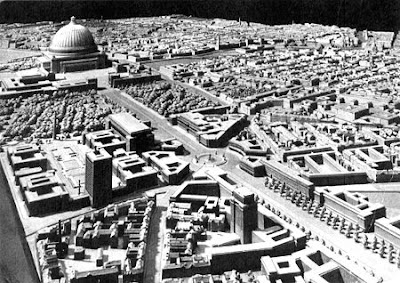"paling tinggi kes rogol, kelantan. paling tinggi kes dadah, kelantan. paling tinggi ibu tunggal, kelantan. paling tinggi pelacuran, kelantan" -SUHAIMI BABA.




























The term Welthauptstadt (World Capital) was already used by Hitler three months prior on the night between the 11th and 12th of March 1942 in the Wolf's Lair:"Just as the Bavarians and the Prussians had to be impressed by Bismarck of the German idea, so too must the Germanic peoples of Continental Europe be programmatically steered towards the Germanic concept. He [Hitler] even considers it good that by renaming the Reich capital Berlin into 'Germania', we'll have given considerable driving force to this task. The name Germania for the Reich capital would be very appropriate, for in spite of how far removed those belonging to the Germanic racial core will be, this capital will instill a sense of unity.—Andreas Hillgruber: Henry Picker. Hitlers Tischgespräche im Führerhauptquartier 1941–1942, p. 182. Munich, 1968.
The title 'Welthauptstadt' was chosen because it was felt that Berlin's architecture was at that time too provincial and that there was need to put Berlin on a par with and exceed the quality of other world capitals such as London, Paris and especially Rome"Berlin as the World Capital will only be comparable with Ancient Egypt, Babylon, and Rome! What are London and Paris compared to that!"—Werner Jochmann: Adolf Hitler. Monologe im Führerhauptquartier 1941–1944, p. 318. Munich, 1980.








 |
| Berlin maps with the tunnels that were operacional in 1945 |






